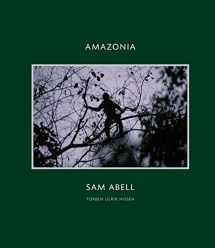
Amazonia
Book details
Summary
Description
Amazonia documents one of the Earth's remaining natural ecosystems—the headwaters of the Amazon River in Peru and Bolivia. Over a series of years beginning in 2003, noted National Geographic photographer Sam Abell traveled along the Amazon, taking photographs of its wild beauty. The resulting images by Abell and his colleague Torben Ulrik Nissen, a noted Danish wildlife photographer and experienced guide, provide rare insight into a remote and untouched landscape and the creatures that inhabit its dangerous rainforest and waters. Through their photographs and firsthand commentary, we experience the challenges and epiphanies of their journey and come to respect the power of the Amazon and its inestimable value to life on this planet.
Because so many dramatic pictures of exotic animals capture our attention regularly, it is important to understand that the photographs were taken in accordance with an agreed-upon dogma. First, the photographers used film. Second, they used no filters or special effects. Third, all of the images are uncropped and were unchanged in post-production. In short, they adhered to the strictest standards of traditional documentary photography. As a result, we see what they saw, nothing more or less. "By showing them in their authentic settings," notes Abell, "we make evident the connection between habitat preservation and the survival of these animals. The Amazon's meaning is in its totality."


We would LOVE it if you could help us and other readers by reviewing the book
Book review



